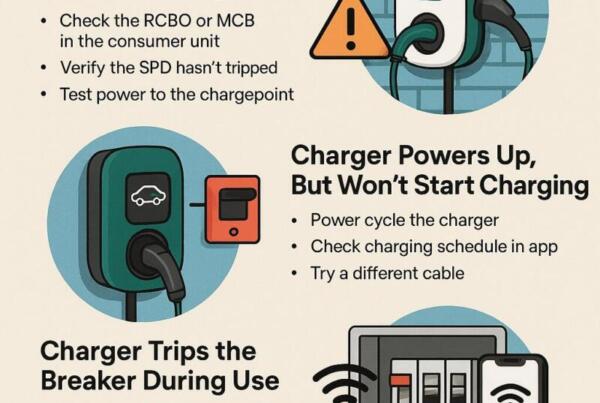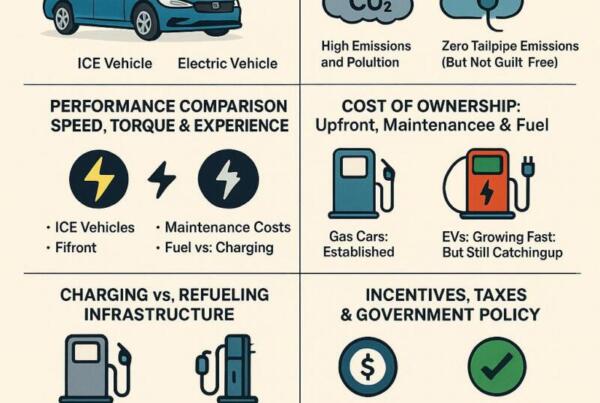Best Practices for Electrical Installations in New Builds
Ensuring safety in electrical installations is paramount for any new build project. Safe, efficient, and regulation-compliant electrical systems are essential for protecting occupants and guaranteeing the longevity of the building. This guide outlines best practices for electrical installations, focusing on planning, regulatory compliance, the use of modern technologies, and the importance of regular maintenance.
Planning and Design
A safe and efficient electrical installation begins with careful planning and design. This stage forms the foundation of the entire system and involves several key considerations:
1. Load Calculation
Accurately calculating the electrical load is crucial to ensure the system can handle the building’s power demands. This involves assessing the total wattage of all electrical devices while accounting for future expansions or additional loads. Overloading circuits can lead to overheating, posing serious fire risks.
2. Circuit Design
Designing circuits to distribute the electrical load evenly is essential. Creating separate circuits for high-power appliances, such as HVAC systems and kitchen appliances, helps prevent overloading. Furthermore, ensuring circuits have adequate capacity means the system can accommodate changes without extensive rework.
3. Placement of Sockets and Switches
Strategically placing sockets and switches enhances both convenience and safety. Sockets should be installed at appropriate intervals and heights to reduce reliance on extension leads, which can be tripping hazards. Switches should be easily accessible and clearly labelled.
4. Compliance with Building Regulations
Adhering to local building regulations and electrical codes is non-negotiable. These regulations guarantee that electrical installations meet safety standards. In the UK, compliance with the IET Wiring Regulations (BS 7671) is mandatory, covering wiring, earthing, and the installation of safety devices.
Compliance with Regulations
Compliance with electrical regulations is critical for safety and avoiding legal issues. Key regulations and standards include:
1. IET Wiring Regulations (BS 7671)
The IET Wiring Regulations set the standards for electrical installations in the UK. These regulations govern the design, installation, and inspection of electrical systems, ensuring installations are safe and fit for purpose.
2. Part P of the Building Regulations
Part P addresses electrical safety in residential buildings. It mandates that electrical installations protect people from fire and electric shocks. Any notifiable electrical work must be inspected and certified by a registered electrician.
3. Health and Safety Executive (HSE) Guidelines
The HSE provides guidelines on electrical safety, particularly in commercial settings. However, many of these principles also apply to residential buildings. Regular maintenance and safety inspections are key to meeting these guidelines.
Modern Equipment and Technologies
Incorporating modern technologies can significantly improve the safety and efficiency of electrical systems. Consider the following advancements:
1. Residual Current Devices (RCDs)
RCDs prevent electric shocks and reduce the risk of electrical fires by detecting imbalances in current and shutting off the power supply. Installing RCDs in all circuits, especially those for outdoor equipment, is essential for safety.
2. Surge Protection Devices (SPDs)
SPDs protect electrical systems from voltage spikes caused by lightning or power surges. These devices are crucial for safeguarding sensitive electronic equipment and preventing damage to the electrical infrastructure.
3. Smart Home Technologies
Integrating smart technologies can improve both safety and convenience. For example, smart lighting systems can be controlled remotely, automatically turning off to reduce fire risk. Smart thermostats can optimise energy usage, making heating and cooling more efficient.
4. Energy-Efficient Lighting
LED lighting is more energy-efficient and has a longer lifespan than traditional bulbs. Using LED lights reduces energy consumption and the frequency of bulb replacements, benefiting both safety and sustainability.
Regular Audits and Maintenance
To ensure ongoing safety and efficiency, regular audits and maintenance are essential. These practices help detect and address issues before they become critical:
1. Electrical Installation Condition Report (EICR)
Conducting EICRs regularly is vital for identifying potential issues. An EICR evaluates the condition of electrical wiring, highlights safety concerns, and recommends necessary repairs or upgrades.
2. Portable Appliance Testing (PAT)
PAT testing ensures that electrical appliances are safe to use. Regular testing helps identify faulty appliances that could pose risks such as electric shocks or fires, particularly in buildings with frequent occupant turnover or high electrical equipment usage.
3. Scheduled Maintenance
Regular maintenance checks for key components, such as consumer units, RCDs, and SPDs, are crucial to ensure proper functioning. Addressing minor issues through routine maintenance helps prevent more serious problems later.
4. Updating Outdated Systems
Older electrical systems may not meet current safety standards or handle modern electrical loads. Updating outdated systems with new wiring, circuit breakers, and safety devices is essential to ensure safety and compliance with modern regulations.
Promoting a Safety-First Culture
Building a safety-first culture is fundamental to any electrical installation project. Here’s how to promote safety among the team:
1. Training and Education
Ongoing training on electrical safety is essential to keep the team updated on best practices and regulatory changes. This training should cover topics such as safe work practices, the use of personal protective equipment (PPE), and emergency response procedures.
2. Safety Meetings and Toolbox Talks
Regular safety meetings and toolbox talks encourage open communication about safety concerns. These sessions provide opportunities to review safety protocols, discuss recent incidents, and address questions or concerns from the team.
3. Encouraging Reporting of Safety Issues
Fostering an environment where team members feel comfortable reporting safety concerns is essential for identifying hazards. A clear and straightforward reporting system ensures that all issues are promptly addressed.
4. Recognising and Rewarding Safe Practices
Recognising and rewarding team members who prioritise safety reinforces the importance of safe practices. Formal recognition programmes, safety awards, or simple acknowledgements in team meetings can encourage continued commitment to safety.
Conclusion
Ensuring safety in electrical installations for new builds is a comprehensive process that requires careful planning, strict regulatory compliance, the use of modern technologies, and ongoing maintenance. By following these best practices, construction projects can achieve high safety, efficiency, and reliability standards. At EcoGreen Electrical, we are committed to maintaining the highest safety standards and delivering top-quality electrical services. Whether you’re starting a new build or upgrading an existing installation, our team of experts is here to ensure your electrical system is safe, efficient, and future-ready.
For more information on our services or to discuss your electrical installation needs, contact EcoGreen Electrical today. Together, we can create a safer, more efficient future.
Frequently Asked Questions
What specific training programs or certifications should electricians complete to ensure they are up-to-date with the latest safety standards and regulations?
Electricians should complete the City & Guilds Level 3 Diploma in Electrical Installations and the 18th Edition IET Wiring Regulations course. Continuing Professional Development (CPD) through organizations like NICEIC and ECA is also essential to stay current with industry changes.
How can homeowners or building managers effectively monitor and maintain smart home technologies to ensure they remain safe and functional over time?
Homeowners and building managers should regularly update software, perform routine checks on devices, and use smart home management apps for centralized monitoring. Annual professional inspections are recommended to ensure all components function correctly and safely.
What are the costs associated with updating outdated electrical systems, and what factors influence these costs?
- Updating outdated electrical systems can cost from a few hundred to several thousand pounds, depending on the building’s size, system complexity, and the extent of the updates. Additional factors include permit costs, hiring certified electricians, and purchasing quality materials.











